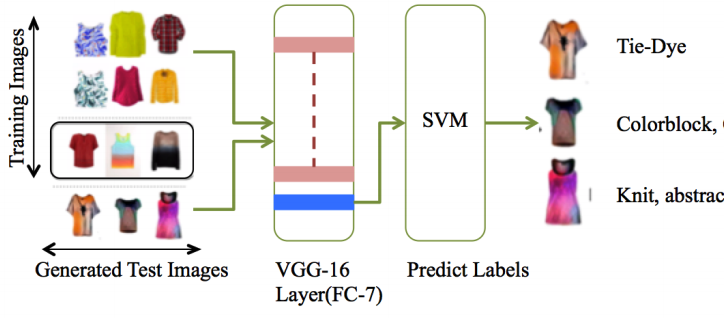
AI system designs clothing for your personal fashion style
Everyone knows that more and more data is being collected about our everyday activities, like where we go online and in the physical world. Much of that data is being used for personalization. Recent UMBC CSEE Masters student Prutha Date explored a novel kind of personalization – creating clothing that matches your personal style.
Date developed a system that takes as input pictures of clothing in your closet, extracts a digitial representation of your style preferences, and then applies that style to new articles of clothing, like a picture pair of pants or a dress you find online. This work meshes well with recent efforts by Amazon to manufacture clothing on demand. Imagine being able to click on an article of clothing available online, personalize it to your style, and then have it made and shipped right to your door!
This innovative research was cited in a recent article in MIT Technology Review, Amazon Has Developed an AI Fashion Designer.
Tim Oates, a professor at the University of Maryland in Baltimore County, presented details of a system for transferring a particular style from one garment to another. He suggests that this approach might be used to conjure up new items of clothing from scratch. “You could train [an algorithm] on your closet, and then you could say here’s a jacket or a pair of pants, and I’d like to adapt it to my style,” Oates says.
Fashion designers probably shouldn’t fret just yet, though. Oates and other point out that it may be a long time before a machine can invent a fashion trend. “People innovate in areas like music, fashion, and cinema,” he says. “What we haven’t seen is a genuinely new music or fashion style that was generated by a computer and really resonated with people.”
You can read more about the work in a recent paper by Prutha Date, Ashwinkumar Ganesan and Tim Oates, Fashioning with Networks: Neural Style Transfer to Design Clothes. The paper describes how convolutional neural networks were used to personalize and generate new custom clothes based on a person’s preference and by learning their fashion choices from a limited set of clothes from their closet.